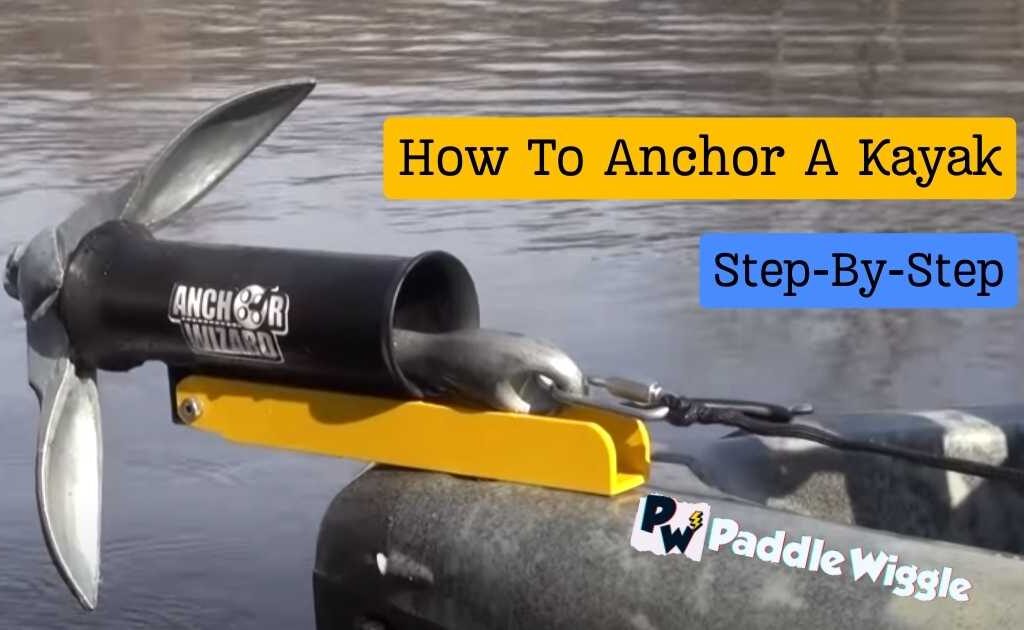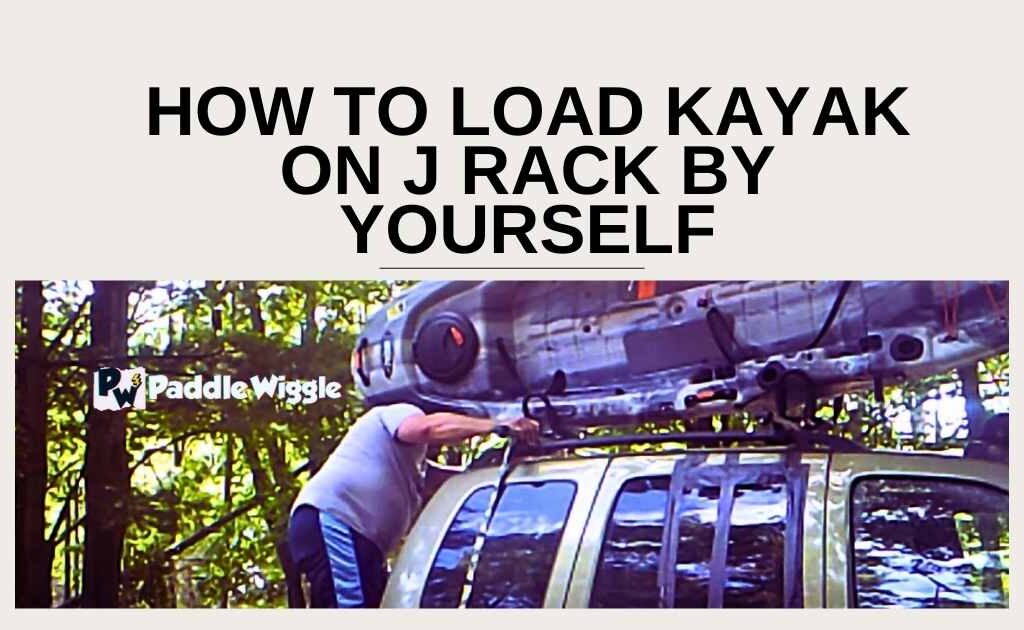Kayaking is a super fun water sport where you get to explore cool places and be in nature. But after your kayaking adventure, you’ll need to figure out how to store your kayak in your apartment.
And it can be tricky. Because every apartment is different, and they usually have limited space. Moreover, storing your kayak the wrong way can get damaged or become a hassle. Many people make the mistake of overestimating the available space and underestimating weight restrictions.
So you’ll need to think creatively and plan carefully to find the best storage solutions for your living space.
That’s why we made this guide to help you avoid common mistakes and make the most of your kayak’s storage in your apartment. When you store your kayak properly, it stays safe and lasts a long time, ready for more fun trips in the future.
Now, let’s jump in and discover the 17 mistakes you should avoid when storing a kayak in an apartment.
Contents


The 13 Mistakes To Avoid When Storing A Kayak In An Apartment
When it comes to storing a kayak in an apartment, there are some common mistakes that you should try to avoid.
Let’s go through the 13 mistakes together:
- Overestimating available space and underestimating weight restrictions
- Neglecting to thoroughly clean and dry the kayak before storage
- Incorrectly positioning the kayak during storage
- Failing to provide proper padding and protection for the kayak
- Leaving accessories attached to the kayak during storage
- Overlooking Ventilation and Humidity Control
- Underestimating Security Risks
- Rushing the Storage Process
- Excessive Weight on Top of the Kayak
- Using Improper Storage Materials
- Using Insufficient Tie-Downs or Straps
- Neglecting to Remove Excess Water Before Storage
- Storing the Kayak near Sharp Objects or Edges
Mistake 1: Overestimating Available Space And Underestimating Weight Restrictions
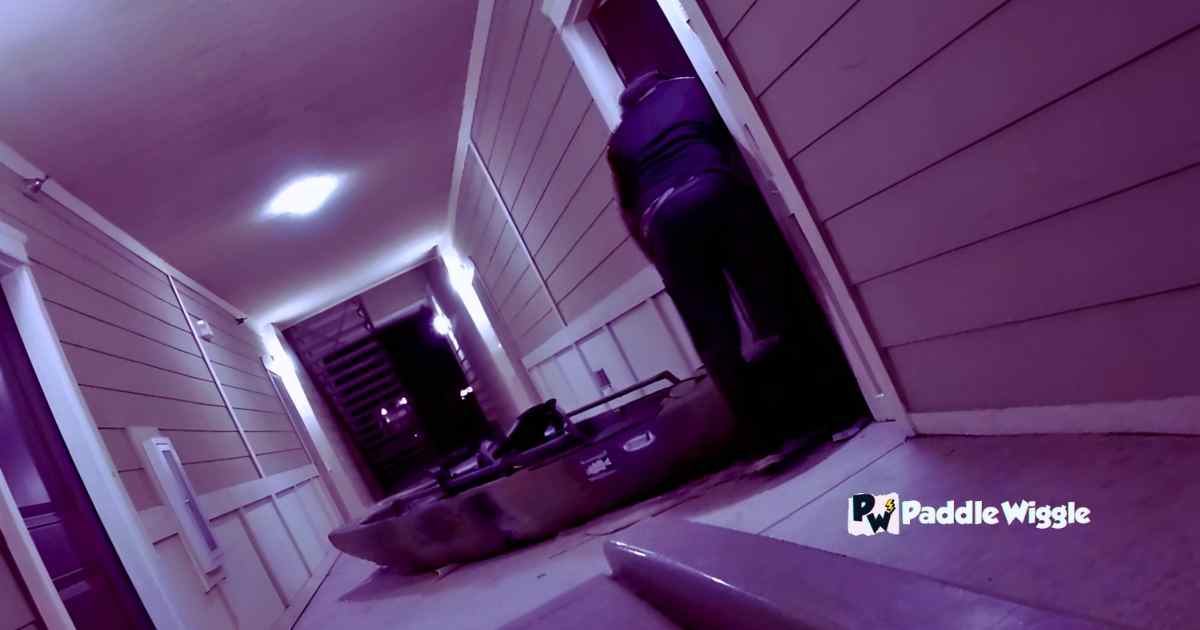

One of the mistakes to avoid when storing a kayak in an apartment is thinking that there is more space than there actually is and not considering how much weight the apartment can handle.
You want to avoid accidentally bumping into furniture or scraping the walls when trying to store your kayak.
So, it’s important to understand how much space you have in your apartment before bringing your kayak inside.
To avoid overestimating the available space, use a measuring tape to measure your apartment’s dimensions. This means measuring doorways, hallways, and storage areas to make sure your kayak can fit without causing any damage.
Then compare these measurements to the size of the kayak you want to store. Ensure the kayak can fit through doorways and comfortably within your designated storage area. This way, you won’t end up with a kayak that’s too big for your apartment.
Additionally, it’s essential to know the weight restrictions set by your apartment. Each building has limits to ensure everyone’s safety.
Mistake 2: Neglecting To Thoroughly Clean And Dry The Kayak Before Storage
One of the mistakes to avoid when storing a kayak in an apartment is not properly cleaning and drying it before storage. And if you don’t clean the kayak thoroughly, these substances can build up and stick to the surface, potentially causing damage over time.
Before storing your kayak, it’s crucial to thoroughly clean it. Use a gentle soap or kayak-specific cleaner to remove any dirt, debris, or saltwater residue from the surface of the kayak.
Make sure to remove any soap or cleaner residue to prevent damage to the kayak’s material.
Pay attention to all areas, including the hull, cockpit, and any accessories or compartments.
Once the kayak is clean, allow it to dry completely before storing it in your apartment. Moisture left inside the kayak can lead to mold, mildew, or rot, which can damage the kayak over time.
To dry the kayak quickly, place it in a well-ventilated area away from direct sunlight. You can prop it up on foam blocks or use a kayak stand to allow air circulation around the kayak.
Remember, cleaning and drying your kayak properly is an essential step in maintaining its longevity and performance.
Mistake 3: Incorrectly Positioning The Kayak During Storage
When the kayak is not stored in the proper position, it can lead to several issues. Firstly, if the kayak is positioned accordingly to the apartment, it can take up more space than necessary. This can make your apartment feel cluttered and cramped, making it difficult to move around and creating an awkward outlook.
Additionally, storing the kayak incorrectly can cause it to lean against walls or furniture, potentially damaging them. It can also put unnecessary pressure on certain areas of the kayak, leading to deformities or weak spots over time.
To avoid these, it’s important to determine the perfect setup for your kayak. So, determine whether vertical or horizontal fit well to your apartment. Then prepare the storage with that.
Verticle positioning is comparatively easier and takes minimum space. You can use a PVC pipe to mount your kayak vertically to your apartment wall.
But when you need to make horizontal storage, make sure to distribute the weight evenly. This means ensuring that the kayak is not leaning to one side or putting excessive pressure on specific areas.
This not only helps to save space but also keeps the kayak in its proper shape. Make sure to place the kayak on a stable and level surface, such as a kayak rack, foam blocks, or a dedicated kayak stand.
Remember, properly positioning the kayak during storage is crucial to maintain proper use of your space.
Mistake 4: Failing To Provide Proper Padding


The padding adds an extra layer of protection to your kayak.
Failing to do this can result in unwanted scratches, dents, or even cracks on the kayak’s surface.
This can happen if the kayak comes into contact with hard surfaces, such as walls, floors, or other objects while being stored.
Over time, these damages can impact the kayak’s performance and reduce its lifespan.
It’s important to use appropriate padding and protection for your kayak to prevent this. You can use padded brackets or hooks to hang the kayak. Ensure it is securely held in place without direct contact with hard surfaces.
Foam blocks can also be placed beneath the kayak to provide soft and cushioned support.
In addition, kayak covers can offer an extra layer of defense against scratches and other external damages. These covers can be easily wrapped around the kayak and provide an added level of protection during storage.
Mistake 5: Leaving Accessories Attached To The Kayak During Storage
Leaving accessories attached to the kayak during storage can have a few negative effects. Firstly, it can take up more space, making storing the kayak in a compact apartment harder.
And it can also cause the accessories to get in the way or potentially damage other items stored nearby.
Moreover, storing the kayak with attached accessories can lead to unnecessary strain on the kayak’s structure. The added weight and pressure can cause deformities or weaken certain areas over time, affecting the kayak’s overall performance.
So, take off items such as paddles and rudders, and store them separately in a dry and safe place. This ensures that the kayak can be stored more efficiently and reduces the risk of damage to both the kayak and the accessories.
Mistake 6: Overlooking Ventilation And Humidity Control
Ventilation and humidity control can lead to the growth of mold and mildew. When the storage area is poorly ventilated, it creates a damp environment that leads to the growth of mold and mildew on the kayak’s surface.
This can cause unpleasant odors, discoloration, and even damage to the kayak’s material.
So, it’s important to maintain proper airflow and humidity control in the storage area where you keep your kayak.
Here are a few tips to follow:
Choose a well-ventilated storage location
Select a storage area that has good air circulation, such as near a window or a well-ventilated room. This helps to prevent the buildup of stagnant air around the kayak.
Allow for sufficient airflow around the kayak
Make sure there is enough space around the kayak for air to circulate. Avoid placing it in cramped or enclosed areas that limit airflow.
Use a dehumidifier or moisture-absorbing products
If your apartment tends to have high humidity levels, consider using a dehumidifier or moisture-absorbing products like desiccant bags or moisture traps. These help to reduce excess moisture in the air and maintain an optimal humidity level.
Mistake 7: Underestimating Security Risks
If the kayak is not securely fastened or stabilized during storage, it can become unstable and prone to tipping over or shifting. This could damage the kayak itself or other items stored nearby.
So, take proper security measures when storing your kayak.
Use tie-down straps to securely fasten the kayak in place. These straps can be attached to stable anchor points or secured to a kayak rack or dedicated storage system.
Knowing that your kayak is properly secured adds an extra layer of protection and peace of mind.
Mistake 8: Rushing The Storage Process
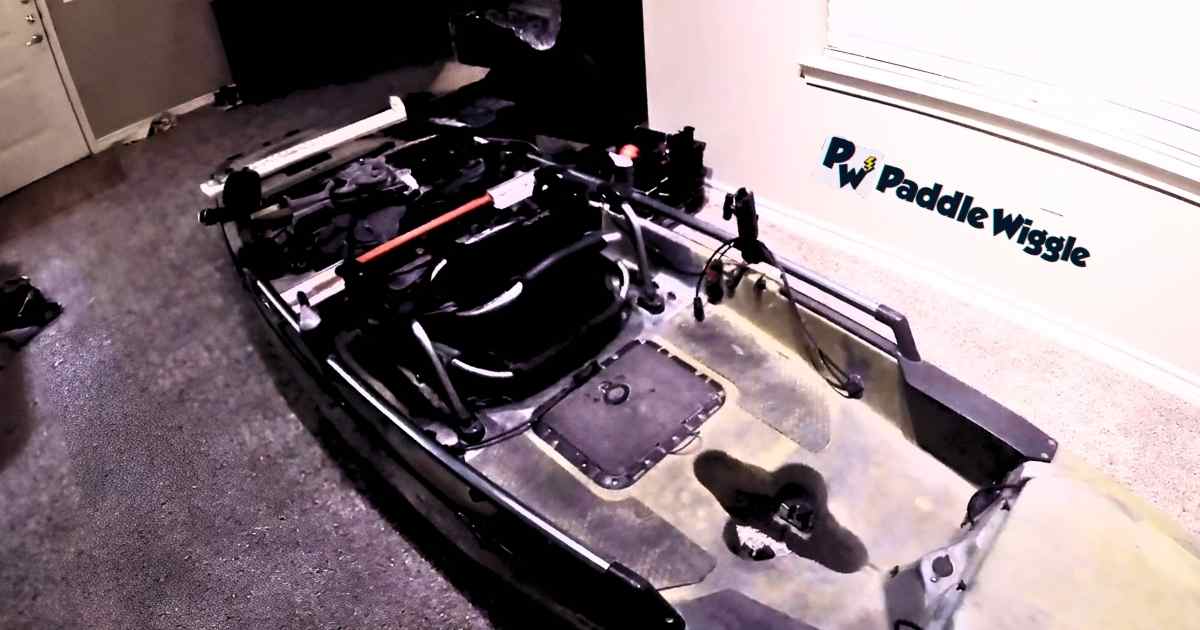

Yes, you heard right!
It means you need to take more time to set up your kayak’s storage. It involves hastily completing the storage setup without proper planning or attention to detail.
With proper planning, you may save valuable space in your apartment. Or need help finding suitable storage solutions for other items.
This may lead to negative consequences. Firstly, it increases the likelihood of making mistakes or overlooking important steps.
So, take your time and follow a step-by-step approach when storing your kayak.
Here’s an expert tip to keep in mind:
Take your time to plan the storage setup
Consider the available space in your apartment and explore different storage options that suit your needs. Ensure you have the necessary tools and equipment to securely store the kayak, such as brackets, hooks, or racks.
Follow a step-by-step approach
Follow a step-by-step approach to ensure a successful and secure storage setup. Start by cleaning and drying the kayak thoroughly. Then, position it in a stable and upright manner, making sure it is evenly distributed and not in contact with any sharp or hard surfaces. Use padding or protective covers to prevent scratches or dents.
Double-check all the stuff
Pay attention to details and make necessary adjustments as needed. Double-check that all straps, brackets, or hooks are properly fastened and secure. Ensure that the storage area is well-ventilated and free from excessive humidity.
Mistake 9: Excessive Weight on Top of the Kayak
It means placing heavy objects or stacking items on the kayak during storage. This can happen when the apartment has limited space, and people mistakenly use the kayak as an additional storage surface.
Placing excessive weight can cause the kayak to become deformed, warped, or even damaged. The hull, which is the main body of the kayak, is designed to bear the weight of the paddler and the water it floats on.
Adding additional weight can exceed the kayak’s structural capacity and lead to structural problems.
Furthermore, the added weight can put pressure on the kayak’s shape, causing it to lose its original form. This can affect the kayak’s performance in the water and compromise its stability and maneuverability.
So, make sure the kayak is free from any heavy objects or items stacked on top of it. The kayak should be stored in a way that distributes the weight evenly along its length.
And avoid using it as a storage surface or stacking items on top of it.
Mistake 10: Using Improper Storage Materials
Low-quality or improper materials may not provide the necessary support or protection, increasing the risk of damage. They can be rough or abrasive, causing scratches or other marks on the kayak’s surface.
Additionally, they may need to securely hold the kayak in place, leading to instability or shifting during storage. This can result in the kayak falling or getting damaged.
So, opt for materials specifically designed for kayak storage and of good quality. Examples include foam blocks, soft straps, and padded brackets.
These materials provide proper cushioning and support for your kayak, preventing scratches and keeping it secure.
You can place foam blocks under the kayak to distribute the weight 1evenly and provide stability. Soft straps can be used to securely fasten the kayak without causing any damage.
And padded brackets can be attached to the walls or a storage system to hold the kayak safely.
Mistake 11: Faulty Straps Or Tie-Downs
Weak or low-quality tie-downs may not securely hold the kayak, increasing the risk of it shifting or falling during storage. This can lead to potential damage to the kayak and surrounding objects.
Additionally, if the tie-downs or straps are not properly rated for the weight of your kayak, they may need more support. This can cause instability and imbalance, making it more likely for the kayak to be damaged or become unstable.
Here’s an expert tip to keep in mind:
Pick the rated one
Ensure the tie-downs or straps are strong, durable, and specifically designed for securing kayaks. Check that they are rated to handle the weight of your kayak to provide adequate support and stability.
Inspect your straps regularly
Regularly inspect the tie-downs or straps for any signs of wear or damage, such as fraying, cuts, or weakening. If you notice any issues, replace them with new ones to ensure their reliability.
Mistake 12: Neglecting to Remove Excess Water Before Storage
Neglecting to remove excess water can have negative effects on your kayak.
When water is left inside the kayak, it can accumulate and create a damp environment. This can lead to the growth of mold, which can cause unpleasant odors and potentially damage the kayak’s materials.
Additionally, if water is not removed, it can contribute to the formation of rust on the metal components or fittings of the kayak. Rust can weaken these parts and affect their functionality over time.
So, after using your kayak, make sure to remove any water that may have entered the kayak’s compartments or hatches.
You can do this by tipping the kayak to allow the water to drain out. Use a sponge or towel to soak up any remaining water.
Once the kayak is drained, ensure that it is thoroughly dried before storing it. This includes wiping down the kayak’s surface and using absorbent materials to remove any moisture.
And pay special attention to areas where water may accumulate, such as seat areas and storage compartments.
Mistake 13: Storing the Kayak near Sharp Objects or Edges
This is the last one on the list. Let’s understand what this means and how it can affect your kayak.
If the kayak comes into contact with sharp objects, it can result in cuts, scratches, or even punctures on the surface. This can not only affect the appearance of the kayak but also compromise its integrity and potentially lead to water leakage.
Storing the kayak near abrasive materials or rough surfaces can also cause friction against the kayak’s hull.
This friction can wear down the kayak’s outer layer, resulting in damage and reducing its lifespan.
When selecting a storage location for your kayak, ensure no sharp objects or edges are nearby. Avoid placing the kayak in close proximity to sharp corners or rough surfaces that could potentially damage it.
So, use padding or place it on a soft mat or carpet. This will provide an extra layer of protection against accidental contact with sharp objects or edges.
How to store a kayak in an apartment
Storing a kayak in an apartment can be a challenge. But with the right approach, you can keep your kayak safe and in good condition.
Here’s a step-by-step guide to make this easier for you.
Step 1: Find A Suitable Storage Area
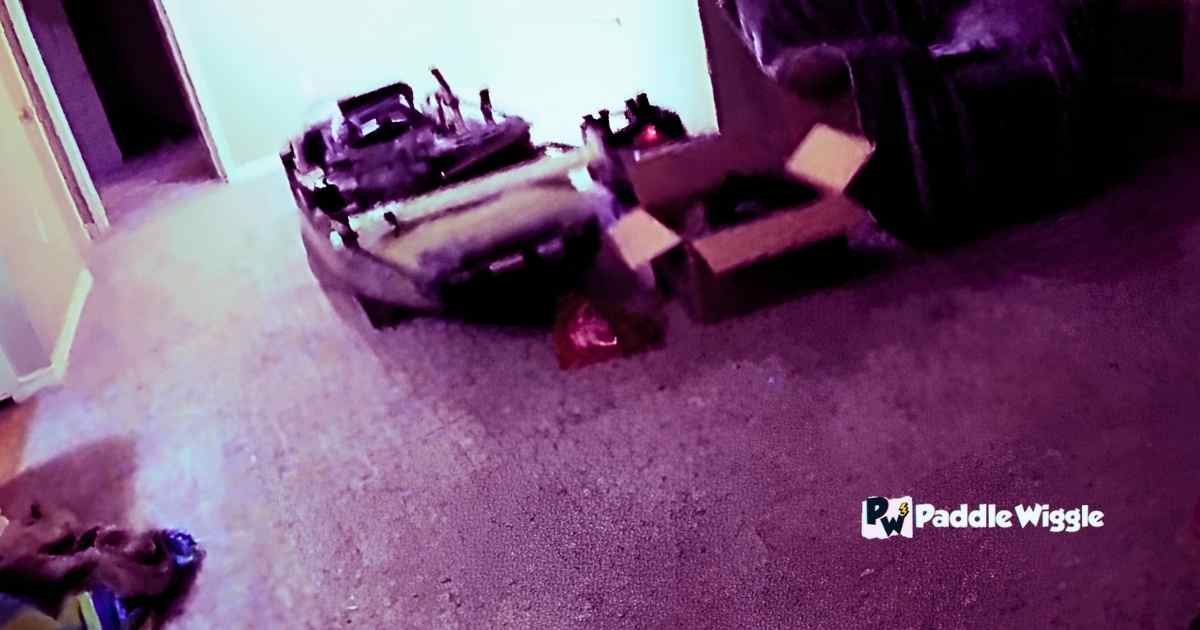

Look for a space in your apartment where you can store your kayak safely. This could be a corner, a dedicated storage area, or even a wall-mounted rack.
When looking for a suitable storage area in your apartment to store your kayak, there are a few things to consider. Firstly, find a space that is easily accessible and doesn’t obstruct walkways or other essential areas. Look for a corner or unused area where the kayak can be stored without causing inconvenience.
If you have limited space, you should get creative. Consider using wall-mounted racks or ceiling hoists to hang the kayak vertically and save floor space. Alternatively, you can look for kayak storage systems specifically designed for apartments, such as freestanding racks or folding brackets.
Before finalizing the storage area, ensure it is away from potential hazards or obstructions. Avoid placing the kayak near sharp objects, edges, or heavy items that could accidentally damage it.
Additionally, consider the environmental conditions of the storage area. Avoid storing the kayak in areas exposed to direct sunlight, as these can affect the kayak’s materials over time.
Step 2: Clean And Dry The Kayak Before Storing
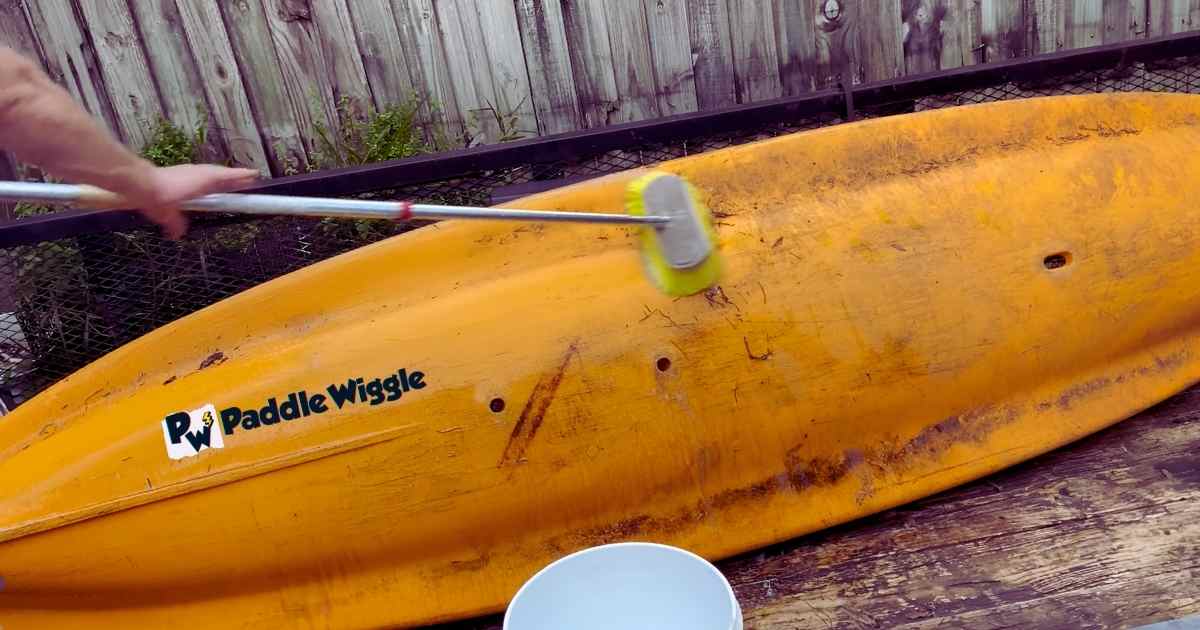

Before storing your kayak, cleaning and drying it properly is important. This helps remove any dirt, debris, or moisture that could cause damage or create unpleasant odors.
You will need a mild soap or dish detergent and a soft sponge to do this. Fill a bucket with water and add a small amount of soap to create a soapy solution. Dip the sponge into the soapy water and gently scrub the surface of the kayak, making sure to clean both the top and bottom.
Pay special attention to any areas with dirt or grime buildup, such as the cockpit or the kayak’s underside. Rinse the kayak thoroughly with clean water to remove all the soap residue.
After cleaning, it’s important to dry the kayak completely. Use a clean towel or cloth to wipe down the surface, removing any remaining water droplets. Pay extra attention to the areas where water can accumulate, such as the cockpit, storage compartments, and hatches. Use a sponge or towel to absorb any moisture from these areas if necessary.
Then allow the kayak to air dry in a well-ventilated area before storing it. This ensures that no moisture is trapped, which can lead to mold or mildew growth.
Step 3: Store the kayak
Now, it’s time to store your kayak.
So, choose the right positioning first. You can store the kayak vertically or horizontally, depending on the available space and the kayak you have.
Storing the kayak upright is a great option if you have enough vertical space. This means standing the kayak on its end, like a tall column.
Make sure to find a spot where the kayak can stand securely without leaning or falling over. You can use kayak wall hangers specifically designed for vertical storage to provide stability.
Storing the kayak vertically helps save space and allows you to make the most of your apartment’s height.
It also prevents any warping or distortion of the kayak’s shape that could happen if it’s stored horizontally for a long time.
However, most people love to store their kayaks horizontally. In this position, the kayak rests flat on its bottom, parallel to the wall top or ceiling.
When storing the kayak horizontally, ensure it’s evenly supported along its length to prevent bending or pressure points. You can use foam blocks or towels as padding.
Remember not to place any heavy objects on top of the kayak, as this can lead to damage.
Step 4: Secure the Kayak
Securing the kayak properly is important to prevent it from moving or falling during storage. This step ensures that your kayak stays in place and remains stable, reducing the risk of damage.
To secure the kayak, you can use tie-down straps or bungee cords. These are strong and flexible materials that help keep the kayak in position.
Start by placing the kayak in the desired storage location, making sure it is centered and aligned. Then, loop the tie-down straps or bungee cords around the kayak and the storage area. Make sure the straps are tight but not overly tight, allowing a firm hold without putting too much pressure on the kayak.
If your storage area has designated hooks or anchor points, you can attach the straps to these for added stability. Otherwise, you can loop the straps around sturdy objects or use hooks or carabiners attached to the walls or ceiling of your apartment.
Once the straps are securely fastened, gently shake the kayak to ensure it doesn’t wobble or shift. If it feels secure and doesn’t move, then you have successfully secured the kayak.
Step 5: Protect the Kayak with Padding
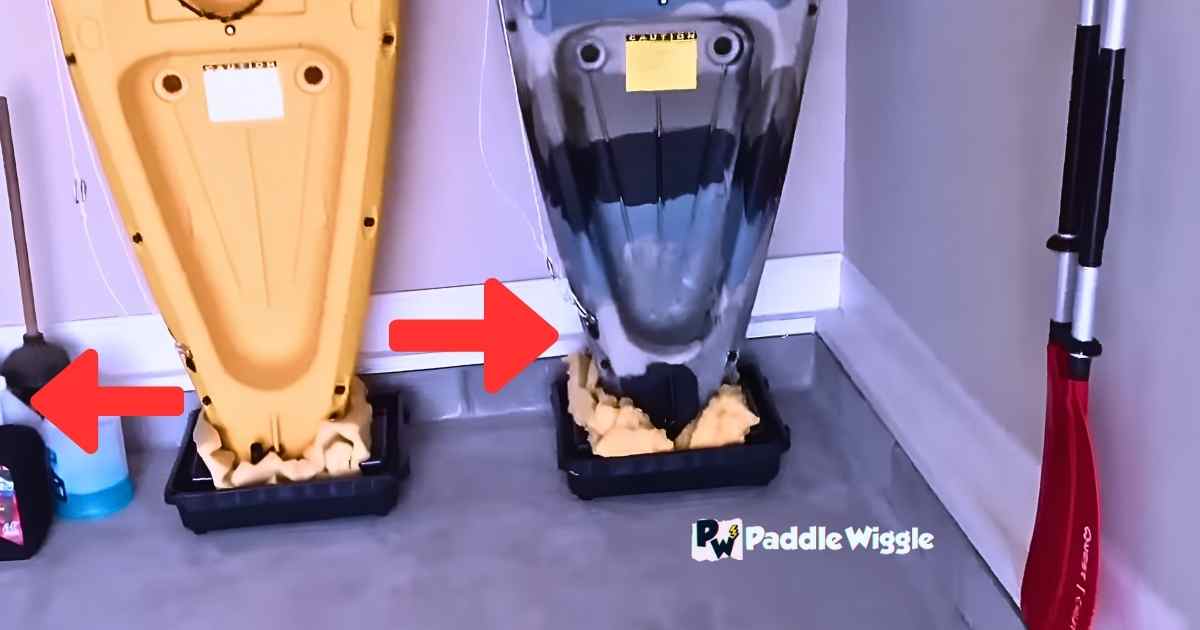

To keep your kayak safe from scratches, dents, and other potential damage, it’s important to provide proper padding during storage. Padding helps to cushion the kayak and protect it from any accidental bumps or impacts.
You can use different types of padding materials, such as foam blocks, soft towels, or even pool noodles. These materials help create a protective barrier between the kayak and the storage surface.
Start by placing the padding material on the storage surface where you plan to keep the kayak. If you’re using foam blocks, position them in a way that evenly distributes the weight of the kayak. You can also use towels or pool noodles to create a soft cushioning layer.
Next, carefully lower the kayak onto the padding, ensuring that it rests securely and doesn’t wobble. The padding should support the kayak’s hull and prevent any pressure points that could potentially cause damage.
If you’re storing multiple kayaks, make sure to separate them with padding to avoid any contact or rubbing between them. This helps to prevent scratches or scuffs.
In addition to padding the storage surface, it’s a good idea to use protective covers or bags for further protection. These covers help shield the kayak from dust, dirt, and any potential environmental elements that could harm its surface.
Learn More
Is It Necessary To Clean The Kayak Before Storing It In An Apartment?
Yes, it is essential to clean the kayak before storage. Removing dirt, saltwater residue, and contaminants helps prevent long-term damage and maintains the kayak’s condition.
Can I Store My Kayak Vertically In An Apartment?
Yes, storing a kayak vertically is a great space-saving option in apartments. Just ensure it is securely supported and balanced to avoid accidents or damage.
Can I Hang My Kayak From The Ceiling In My Apartment For Storage?
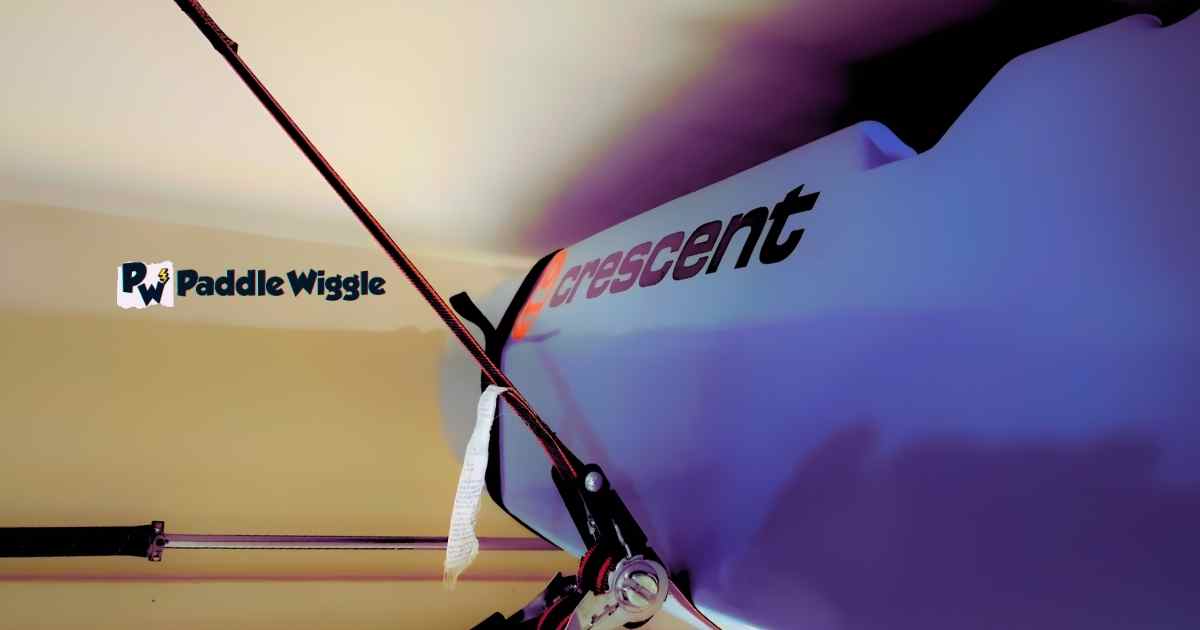

Hanging a kayak from the ceiling can be a viable storage option if your apartment allows it and the kayak is properly supported. Use sturdy ceiling hooks or a pulley system designed for kayak storage.
What Should I Do If I Don’t Have Enough Space In My Apartment To Store A Kayak?
If space is limited, explore alternative storage options such as off-site storage facilities, kayak storage racks in community centers, or sharing storage space with other kayak enthusiasts.
Can I Make Modifications To My Apartment For Kayak Storage?
Yes, you can. Before making any modifications, ensure that you comply with building codes and apartment regulations. Seek permission from your landlord or building management if necessary and consider reversible modifications.
Final Words
Storing a kayak in an apartment can be tricky. But you can avoid those mistakes and follow the right steps to make the perfect storage for your kayak.
Take your time when you’re putting the kayak away, and follow each step carefully. Don’t rush through it. And pay attention to the little details.

